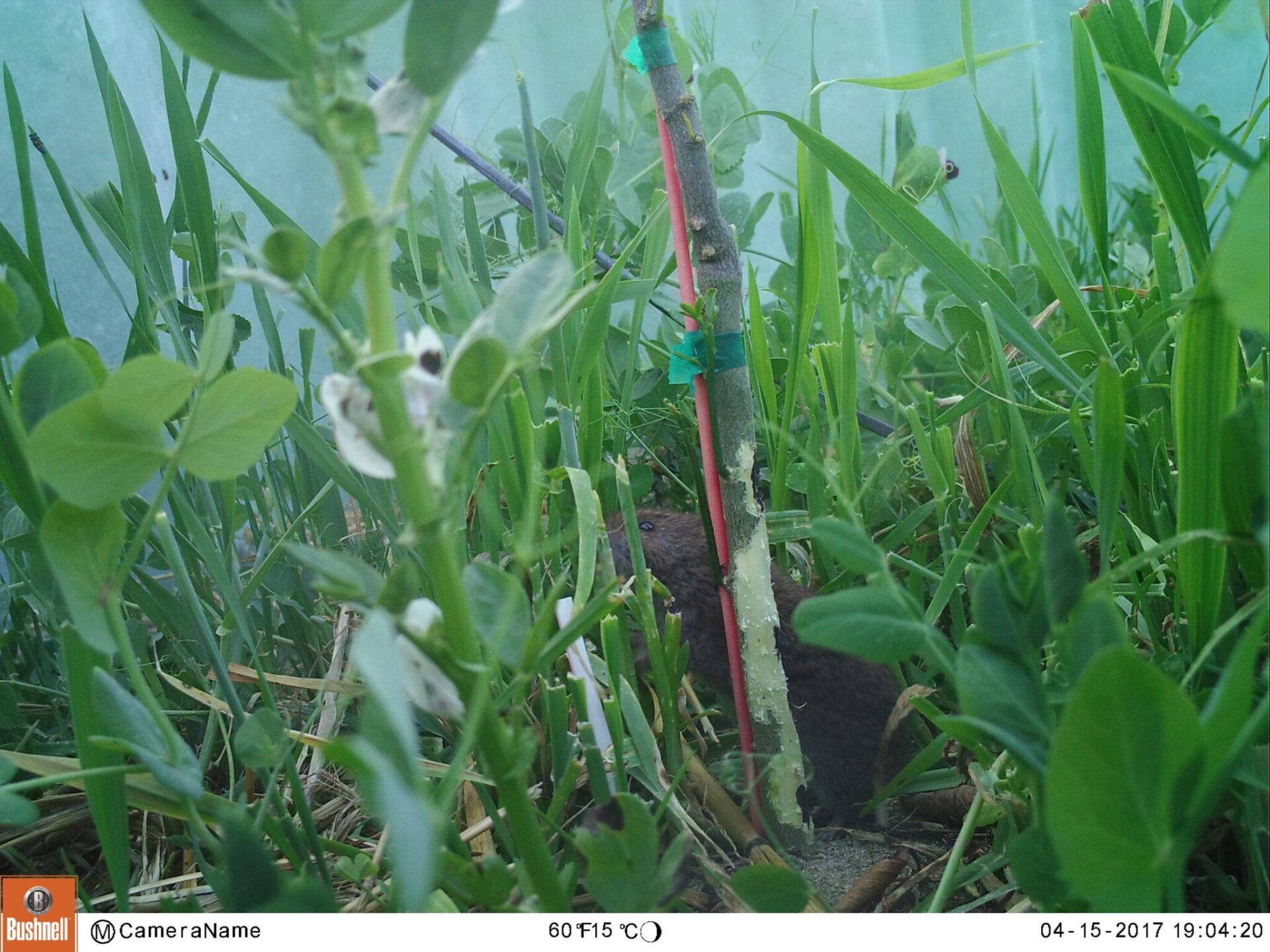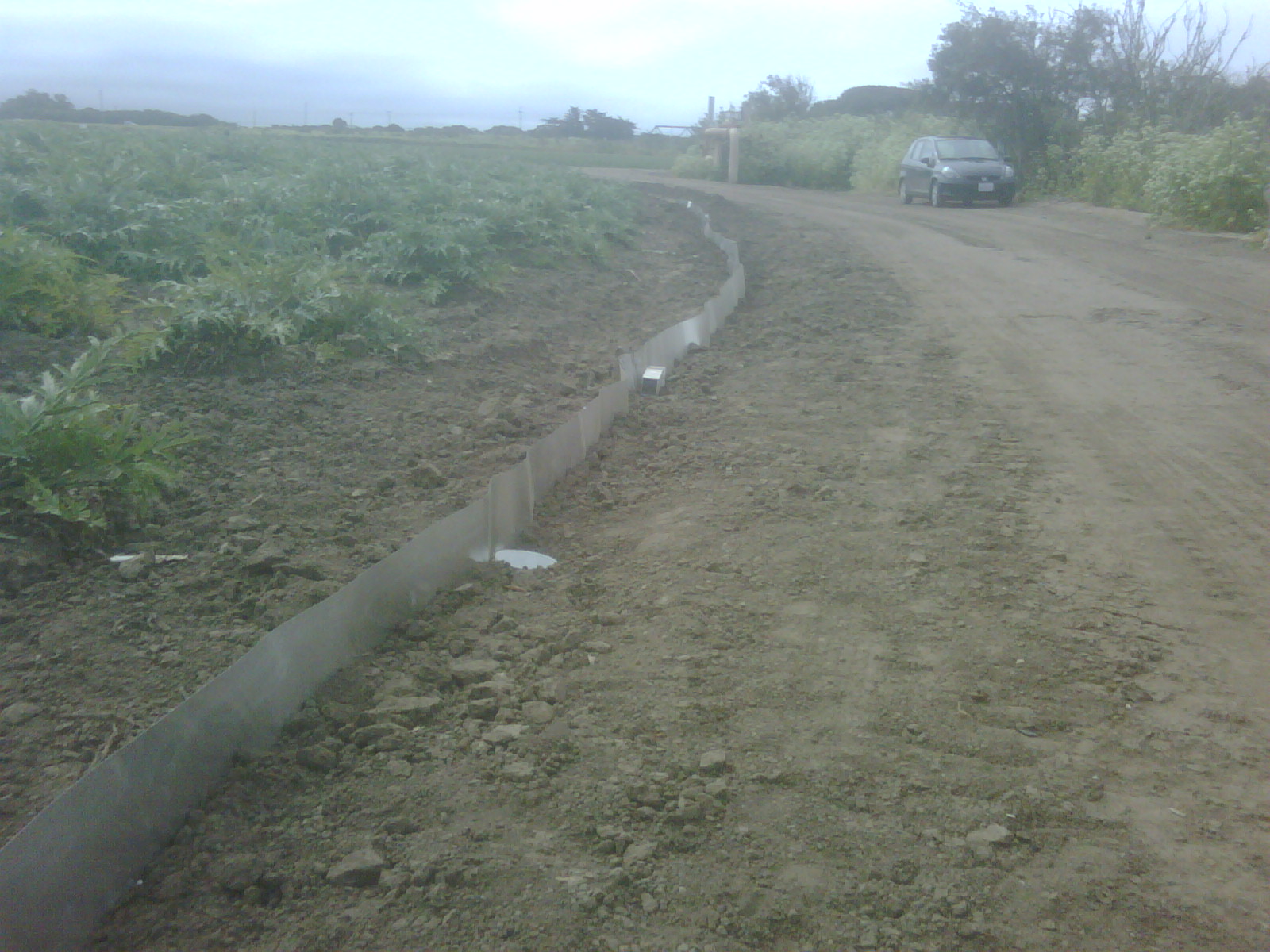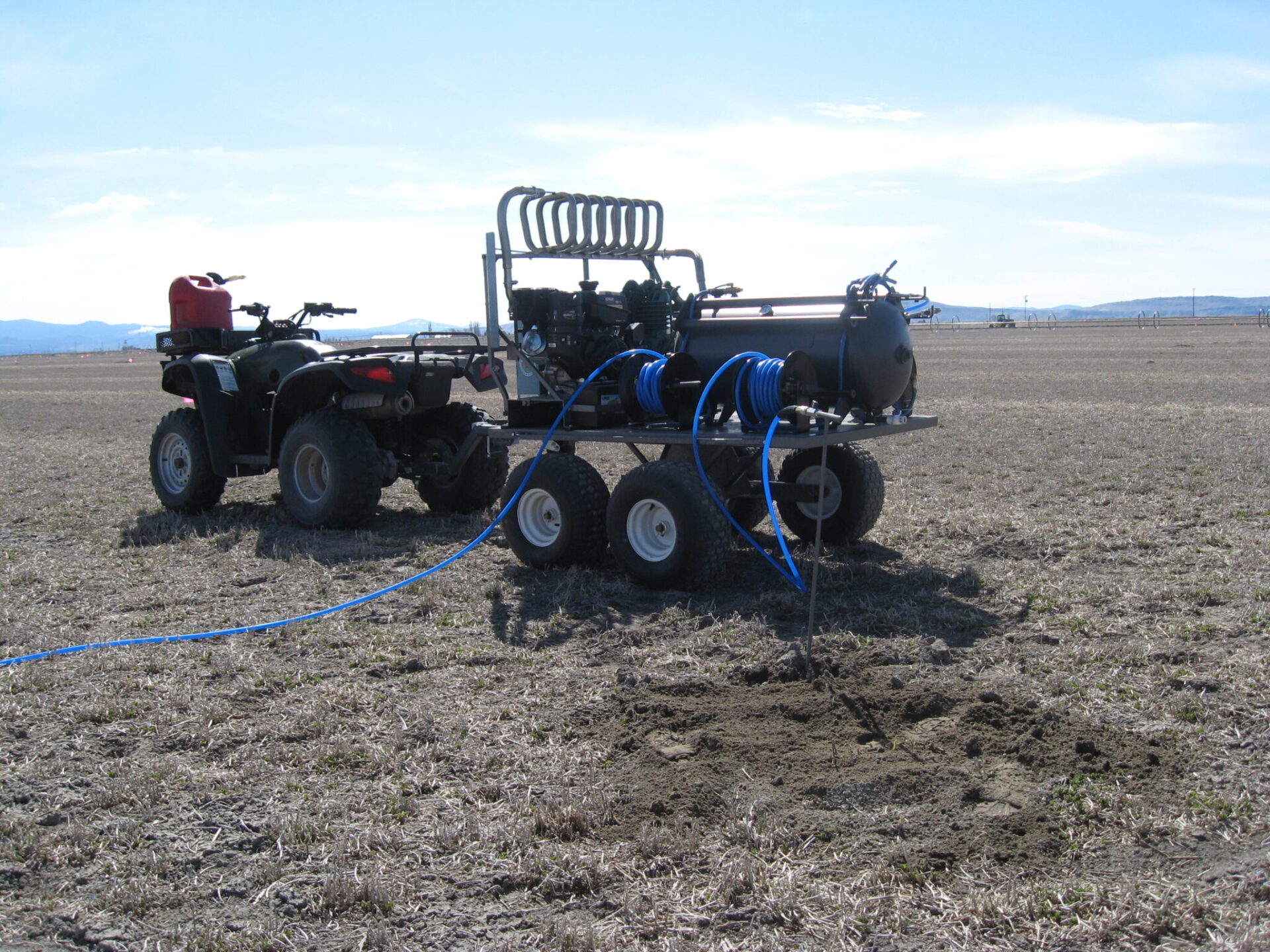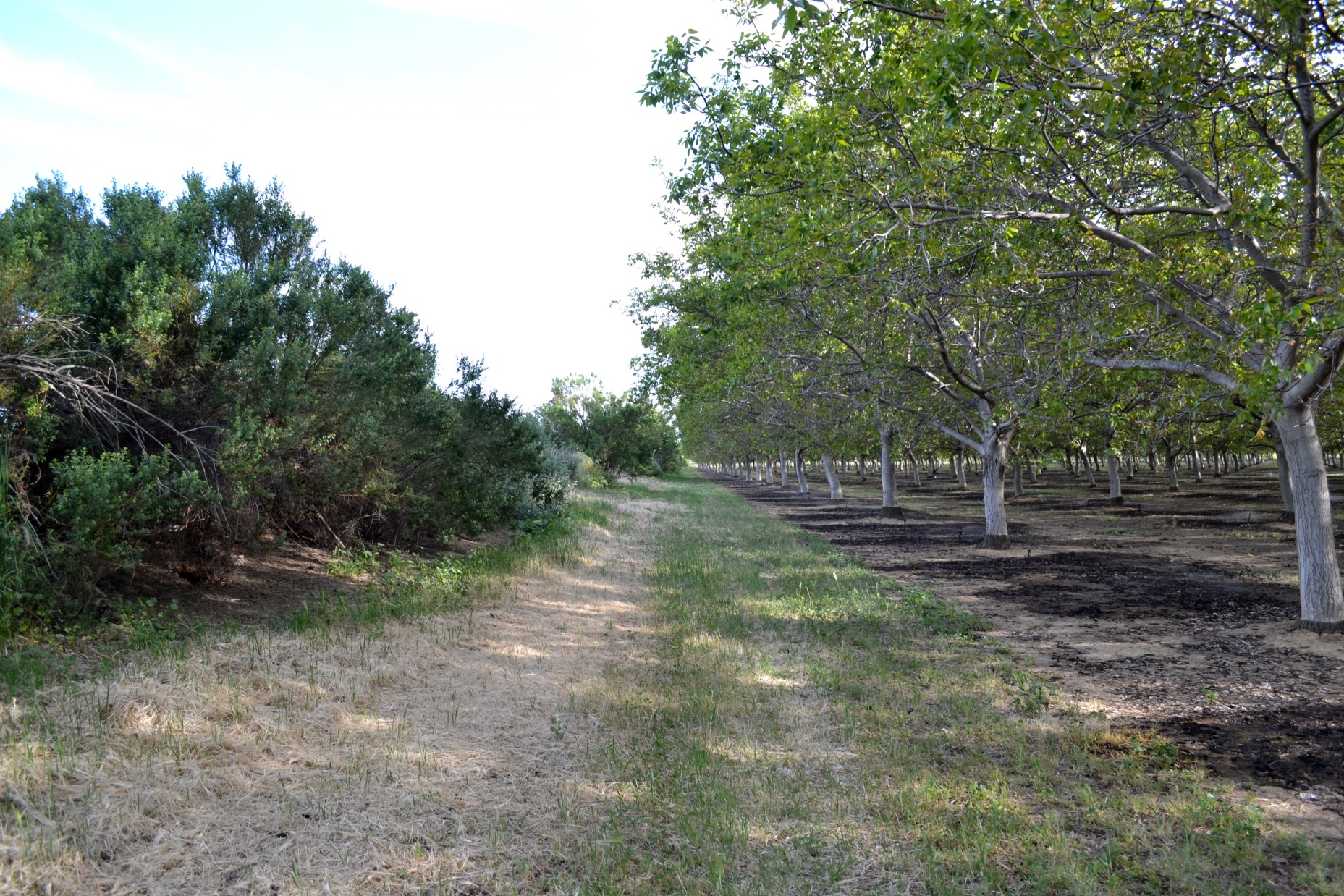
Research updates for burrowing rodents provide walnut growers with a more effective set of strategies and tools for damage prevention.
Burrowing rodents typically found in California walnut orchards include California ground squirrels, pocket gophers, voles, roof rats and deer mice. These rodents are found uniformly throughout the state, with most walnut orchards experiencing infestations of at least one species.
Exclusion
Exclusion strategies in rodent management are ways that growers can prevent rodent pests from physically entering a protected area through the use of fencing and other methods.
Research conducted by Roger Baldwin, a UCCE wildlife specialist in the Department of Wildlife, Fish and Conservation Biology at UC Davis, found that fencing works for some rodent pests and not others.
“We dug trenches about two and a half feet deep and put gopher wire down the length of that and allowed it to extend above ground to see if we could slow down gopher incursion into those areas,” Baldwin said during a presentation for the 2021 UCCE Virtual Walnut Series. “We suspected it probably wasn’t going to work and it didn’t; the gophers found their way around the fencing.”
Fencing for voles provided more effective means of slowing movement. Baldwin and other researchers used aluminum flashing sheets and buried it six inches below ground, allowing the flashing to extend 8 to 12 inches above ground.
“This did substantially slow down movement of voles,” Baldwin said. “It doesn’t completely stop it, of course, but it does slow it down. If you have adjacent habitats where you constantly have vole movement from and into an orchard, then I think something like this might be a good strategy.
“You’re probably not going to be able to fence off an entire field. That’s not practical,” he added. “You need to be able to move equipment in and out of the field, things along those lines.”
Baldwin also noted that any and all vegetation within one to two feet of the fence base should be removed as it may allow voles, which are dependent on crop cover to avoid predation, to linger and eventually figure out ways around the fence.
Walnut growers also can also use tree protectors on the bases of newly planted trees to protect from vole girdling damage. This damage mitigation strategy, however, is labor-intensive and costly.

Repellents
In general, according to Baldwin, repellants have not worked well for controlling rodents in field or orchard settings. However, lab results have indicated that anthraquinone, a post-ingestive repellent, works well against some rodents, particularly voles.
“We found that it actually was a pretty effective repellent against voles,” Baldwin said. “With voles in our lab trials, we had 84% repellency using the highest concentration of anthraquinone.
“We thought, ‘Well, this is pretty good, is this something we could utilize in a field setting?’” he continued. “We thought that tree crops might be the best scenario for which this might work. Voles, unlike other species, don’t climb well, so we thought that if we coated the bottom 10 to 12 inches of a tree where voles girdle, then that might be a way to reduce some of that girdling damage.”
Baldwin and researchers set up a trial to analyze vole girdling during spring and summer seasons. They found that, depending on the season, girdling damage was reduced 10- to 20-fold when anthraquinone was present.
Baldwin noted that, in general, repellents require periodic reapplication in order to maintain efficacy, which can be costly and laborious. However, anthraquinone, he said, showed extensive longevity.
“We looked up to five weeks in summer and six week in springtime and did not see an increase in girdling damage,” Baldwin said. “We think there’s probably an extended period of efficacy associated with this [anthraquinone]. Keep in mind that with new growth in trees, there will have to be some reapplication periodically, but my guess is that once every year or two might be all that you need to do.”
While Baldwin believes that anthraquinone can be a good option for growers who experience extensive vole girdling damage, he said that the product is not currently registered for use, but is in the process of becoming registered, hopefully in one to two years.
Another possible application for rodent control using repellents is reducing damage to surface drip irrigation (SDI) from pocket gophers. SDI has become a popular irrigation option throughout the state, but Baldwin said that gopher damage is one of the biggest hurdles for greater implementation.
“The depth of the drip tape is usually at the perfect level for gophers, so they come through and chew quite extensively on this drip tape,” he said. “This creates situations like substantial flooding which leads to all kinds of issues.”
Baldwin said that he and researchers have begun to look at the potential of running a repellent through the water during an irrigation event to move gophers out of a particular area.
“There’s a product called Protec-T (active ingredient is methyl mercaptan) that just became registered for use in California in January of this year,” he said. “We’ve just begun to look at the efficacy of this. What we’ve seen so far is a 41% reduction in gopher numbers. It’s not getting rid of gophers, but it is reducing the number in the field.”
Baldwin said that they haven’t studied this method enough to determine whether damage is reduced on SDI, but he believes that the possibility of damage reduction is promising.
“We haven’t had a chance to do it yet, but we need to measure the number of strikes on drip tape. That’s the most important thing that we need to measure right now,” he said.

Carbon Monoxide Machines
In the last few years, California has legalized carbon monoxide machines, sometimes referred to as pressurized exhaust machines, according to Baldwin, for burrowing rodent control. The devices inject carbon monoxide through hoses into burrowing systems and kill rodents.
Research conducted by Baldwin and others revealed that between 56% and 68% efficacy could be achieved for gophers across various soil conditions and 66% to 100% efficacy could be achieved for ground squirrels, all using a PERC carbon monoxide machine.
“The efficacy we observed with the PERC machine in dry soil conditions is much better than we would expect with more traditional burrow fumigants like gas cartridges or aluminum phosphide, and they seem to work as well or better than these same fumigants in ideal moist soil conditions,” Baldwin said. “So, I do think that these kinds of pressurized exhaust machines are probably very effective for ground squirrels and relatively effective for gophers.”
Trapping
Baldwin also mentioned a new trap type for roof rats known as the A-24 repeating trap. The trap has an automatic lure pump and can be placed up into trees. Once the rat smells the bait and hits the trigger, a CO2-fired bolt will kill it, automatically resetting afterwards, according to Baldwin.
“The trap will reset up to 24 times and the lure will last for several months out there,” Baldwin said.
He noted that the traps can provide additional benefits such as reduced labor costs since they last for long periods, but are also expensive. “They are $150 to $200 a piece, and we’re still not sure how efficacious they really are,” Baldwin said.
Research is underway to address the efficacy of these traps.
















